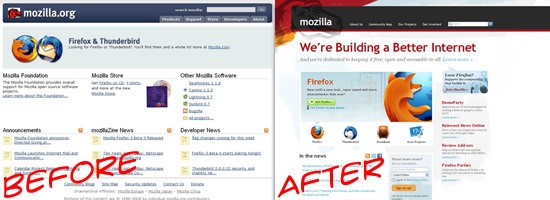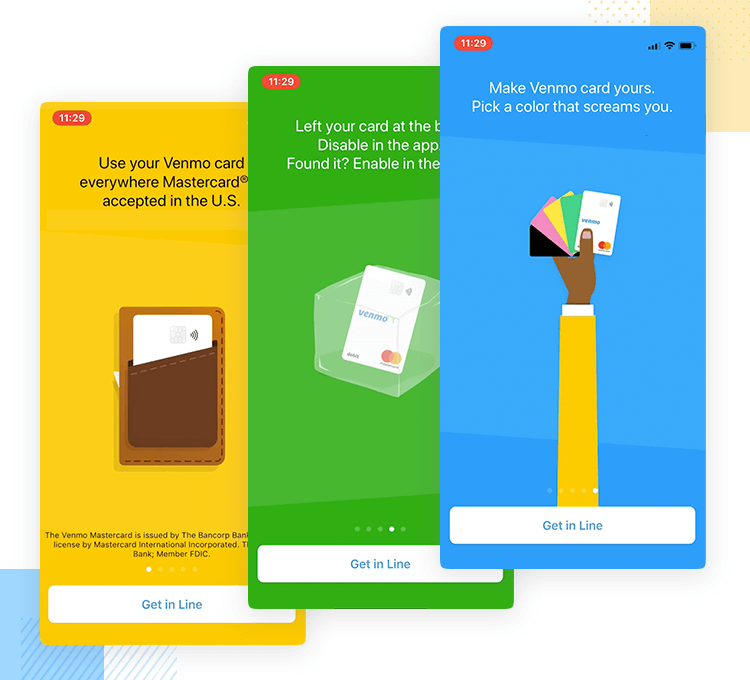
It doesn't matter if your level of experience is advanced or novice, it's important to understand the basics of web design in order to create websites that work. It is possible to make better web design decisions and increase your online reputation by understanding the principles of web design. You can also make your website more interactive and fun to use.
Layout is the most important aspect of web design. A website's layout is intended to organize and simplify navigation. The grid system uses columns and gutters to organize content. White space is the area around the elements.
There are many tools available to help you create the design elements of a website. Adobe Illustrator and Sketch are the top tools. These tools can be used for prototyping and make it easy to create custom graphics.

Another tip is to use grid systems to organize your website. This makes it easier for you to see the layout of your website. You can also make a grid system of your pages by breaking them into sections. A homepage might include a header with search bar, navigation and social media icons. It is possible to add an inline hyperlink that allows users access the website's navigation, buy products, and explore further.
Understanding how to use modern web technology is an important part of web design. There are many tools you can use to create and customize your site, but the most commonly used are HTML and CSS. This language is vital for any web designer and opens up a new world of customization options. It helps keep your website original and fresh.
If you want to get started learning the web design basics, you can take online classes. You can also take classes in person, such as at a college or university. There are many classes to choose. Adobe Dreamweaver offers a free trial, which is an excellent tool for creating websites. Adobe Dreamweaver offers most of what you will need in a free version.
A variety of websites are available that are made specifically for beginners. These websites make web development easy, and will help you create a portfolio for your web design skills. These websites can also serve as a source for inspiration. These websites have full accessibility functions that make them accessible to all users, blind and otherwise.

The basics of web design include choosing the correct fonts and choosing colors carefully. The best website designs use good typography, and use color to show contrast and interest. You can also include imagery to your site. This can help you grab the visitors' attention, and guide them to the content. Images can also help create white space.
FAQ
What is a UI Designer?
Designers of user interfaces (UI) are responsible for creating interfaces for software products. They are responsible for the design of the layout and visual elements in an application. Sometimes, the UI designer might also include graphic artists.
The UI Designer must be able to solve problems and understand how people use computers.
A UI designer should have a passion for technology and software design. From developing ideas to implementing them into code, a UI designer must be able to comprehend all aspects of the field.
They should have the ability to design using various techniques and tools. They must be able think creatively and find innovative solutions to problems.
They should be organized and detail-oriented. They should be capable of quickly and efficiently developing prototypes.
They should be comfortable working with clients, both large and small. They must be capable and willing to adapt to new situations and environments.
They should be able to communicate effectively with others. They should communicate clearly and concisely.
They must be well-rounded and have strong communication skills.
They must be driven, motivated, and highly motivated.
They should be passionate about what they do.
Which platform is best for designing a website?
WordPress is the best platform to design a website. It offers all the features that you need to build a professional-looking website.
Themes are easy-to-install and customizable. There are many themes to choose from online.
Plugins are another way to add functionality. They can do everything, from adding social buttons to creating contact pages to adding forms.
WordPress is very user-friendly as well. You don't have to know HTML code to change your theme files. You just need to click on the icon and choose what you want to modify.
Although there are many platforms out there, I prefer WordPress. It's been around since the beginning and is still being used by millions of people worldwide.
Can I use a template or framework on my website?
Yes! Yes! Many people use pre-built frameworks or templates when creating websites. These templates have all the code you need to display your information on your website.
The following are some of our most-recommended templates:
WordPress - The most popular CMS
Joomla - another popular open source CMS
Drupal - Drupal is an enterprise-level software that large organizations can use
Expression Engine - a proprietary CMS from Yahoo
Each platform has hundreds of templates, so it should not be hard to find the one that you like.
What Should I Include In My Portfolio?
These are the things you should include in your portfolio:
-
You can also see examples of your previous work.
-
If you have one, links to it.
-
Links to your blog.
-
These are links to social media sites.
-
Links to online portfolios of other designers.
-
Any awards you received.
-
References.
-
Get samples of your works.
-
Here are some links that will show you how to communicate with your clients.
-
These are links that show you're open to learning new technologies.
-
You are flexible, these links will show it.
-
Links showing your personality.
-
Videos showing your skills.
Statistics
- It's estimated that in 2022, over 2.14 billion people will purchase goods and services online. (wix.com)
- Studies show that 77% of satisfied customers will recommend your business or service to a friend after having a positive experience. (wix.com)
- When choosing your website color scheme, a general rule is to limit yourself to three shades: one primary color (60% of the mix), one secondary color (30%), and one accent color (10%). (wix.com)
- Did you know videos can boost organic search traffic to your website by 157%? (wix.com)
- It's estimated that chatbots could reduce this by 30%. Gone are the days when chatbots were mere gimmicks – now, they're becoming ever more essential to customer-facing services. (websitebuilderexpert.com)
External Links
How To
How can I become a UI designer?
There are two paths to becoming a UI design:
-
You can earn a degree in UI Design by going to school.
-
You can go freelance.
If you want to go through school, you'll need to attend college or university and complete four years of study. This includes psychology, computer science, marketing, art, and business.
There are also state universities and community colleges that offer classes. Some schools offer free programs; others charge tuition fees.
You will need to find work after graduation. If you are going to be working for yourself, you will need to build your client list. Networking with other professionals is important so that they know you are there.
Opportunities to intern in web development companies are available. Many companies hire interns to gain work experience before hiring full-time workers.
Your portfolio will help to get you more work. You should have work samples and information about the projects you worked on in your portfolio.
It's a good idea to send your portfolio to potential employers via email.
You will need to market your services as a freelancer. You can post your services on job boards, such as Guru, Indeed, Guru or Upwork.
Many recruiters post job openings online and assign freelancers. These recruiters are looking for qualified candidates to fill certain positions in specific industries.
These recruiters usually provide a briefing outlining the requirements of the job to the candidate.
While freelancers aren't required to sign contracts for a long time, they can still be paid. If you are looking to make a move, however, it is advisable to negotiate an upfront payment.
Many designers prefer to work directly and not through agencies. Although this might seem like a great idea, many people lack the necessary skills.
Agency workers usually have extensive knowledge about the industry they are working in. They have access to resources and training that enable them to produce high quality work.
Aside from these benefits, agency workers are often paid a higher hourly pay.
You won't be able to get in touch with your employer directly if you work with an agency.
You must be creative, self-motivated and flexible to succeed as a UI Designer.
Additionally, communication skills must be excellent both in written and verbal.
UI designers are responsible for designing websites by creating user interfaces (UI) and visual elements.
They are responsible for ensuring the site meets its users' needs.
This includes understanding the information that visitors require and how the site should function.
Wireframes can also be created by UI developers using a variety o tools. They use wireframing to help them visualize the layout of a webpage before they start designing.
Wireframe templates are available online, making it easy for anyone to create their own wireframes.
Some designers are solely focused on UI design while others blend UI design and graphic design.
Photoshop is used to edit images by graphic designers.
To create pages and layouts, they then use Adobe InDesign.
Photographers capture images using digital cameras or DSLRs.
They then upload the images to a program for photo editing, where they add text captions and filters.
Afterward, the photographer saves the image in a file format compatible with the website.
It is vital to consider all aspects in the web design process.
This includes research, planning and prototyping.
Research - Before you start a new project, it's important to do thorough research.
Planning - After you have completed your research, it's time to start creating a plan.
Wireframing – A wireframe is a preliminary sketch or drawing of a webpage or application.
Prototyping - Prototypes help ensure that the final product matches the initial vision.
Testing - To ensure that the prototype works correctly, it should be subject to multiple rounds of testing.
Coding - Coding refers to the process of writing computer code.
Content Creation – This covers everything from creating copy to managing social accounts.
Publishing involves uploading files to a server, and making sure the site is accessible.
You'll need to be able to understand the different projects you work on as a freelance UX/UI Designer.
Some companies may only need wire frames while others require complete prototypes.
Depending on which type of project you accept you might be asked to do specific tasks.
For instance, if your job is to create wireframes you might have to make several over the course of time.
If you're being hired to create a full prototype, you might be asked to create a fully functional site.
It doesn't really matter what project you're working on, good interpersonal skills are vital.
Since most clients hire freelancers based on referrals, you must build solid relationships with potential employers.
You must also be able communicate clearly both verbally as well as in writing.
A portfolio is an important component of any freelancers' arsenal.
It is a showcase of your work and a demonstration of your ability produce high-quality outputs.
This can be done online by creating a portfolio.
Find websites similar in your niche to get started.
These sites can be searched to determine which services they offer.
Once you identify what you think are the best practices, go ahead and adopt them.
It is also a good idea to include links in your resume to your portfolio.